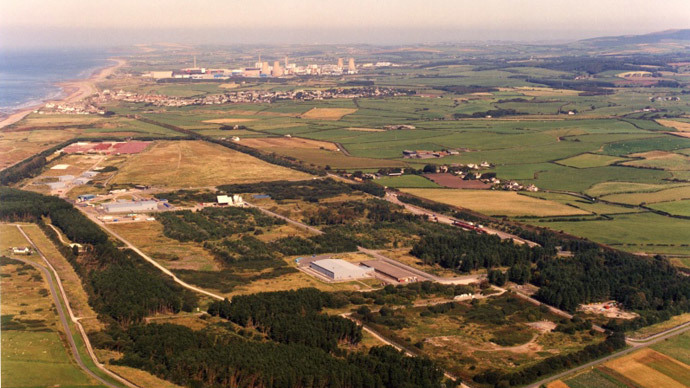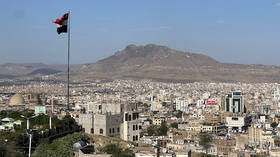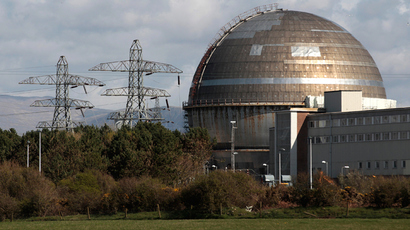Nuclear waste at ‘eroding’ dump near Sellafield ‘will be disrupted’ – govt agency

A site on the Cumbrian coast where 1 million cubic meters of nuclear waste from all over the UK has been buried for the past 55 years has been declared a potential source of contamination – due to coastal erosion and rising sea levels.
The government-run Environment Agency (EA) released a document dated to January this year, saying that the Drigg Low-Level Waste Repository (LLWR) that operates near the Sellafield nuclear power plant, and processes civilian and military refuse, could dislodge “discrete items carrying a significant burden of radioactivity individually” onto nearby beaches.
"It is doubtful whether the location of the LLWR site would
be chosen for a new facility for near-surface radioactive waste
disposal if the choice were being made now," claims the
report, obtained by the Guardian newspaper after a
direct request.
The 110 hectare site is located just one hundred yards from the
coast, on an elevation of between 5 and 25 meters above sea
level.
The repository, which is run by an American-French-Swedish
private consortium led by California-based URS Corporation,
already asked the EA for additional flood barriers, after a
privately commissioned report earlier this year said that some
parts of the site were susceptible to flooding.
But the problem is likely to get worse with long-term coastal
erosion, though the UK agency’s own experts believe that the
timeframe is "a few hundred to a few thousand years from
now", while conceding that process in inevitable.
"It's highly probable the coast will erode and the waste will
be disrupted,” says the EA.
The LLWR consortium agrees with the report, but says that the
impact of any leakage will be lessened due to decay, and the fact
that the site stores only mildly contaminated items such as
irradiated hazard suits and discarded hospital equipment.
"The radioactivity in the wastes will largely have decayed away
by this time,” said Richard Cummings, the consortium’s head
of science and engineering.
The group has also said that it has introduced new restrictions
on waste, since the multiple reports highlighting the potential
dangers.
"The stringent regulatory requirements we have to meet ensure
that even if people in the future forget about the repository and
the wastes disposed there, the effects will be
insignificant," assured Cummings.
Environmental activists say that while procedures for disposal
have become more thorough – with all waste processed, boxed and
placed in large underground concrete blocks – it was not so in
the past. Local group Cumbrians Opposed to a Radioactive
Environment said that waste before the 1990s was simply buried in
a trench, and not always thoroughly catalogued, meaning that the
LLWR trenches contain waste from notorious accidents such as the
Windscale Fire of 1957, and Chernobyl in 1986.
URS Corporation has dismissed these allegations.
An official government consultation will begin on the future use
of the Drigg site this autumn. If the application is successful,
the site will be used for at least 100 more years, and will house
another 800,000 cubic meters of radioactive waste.














